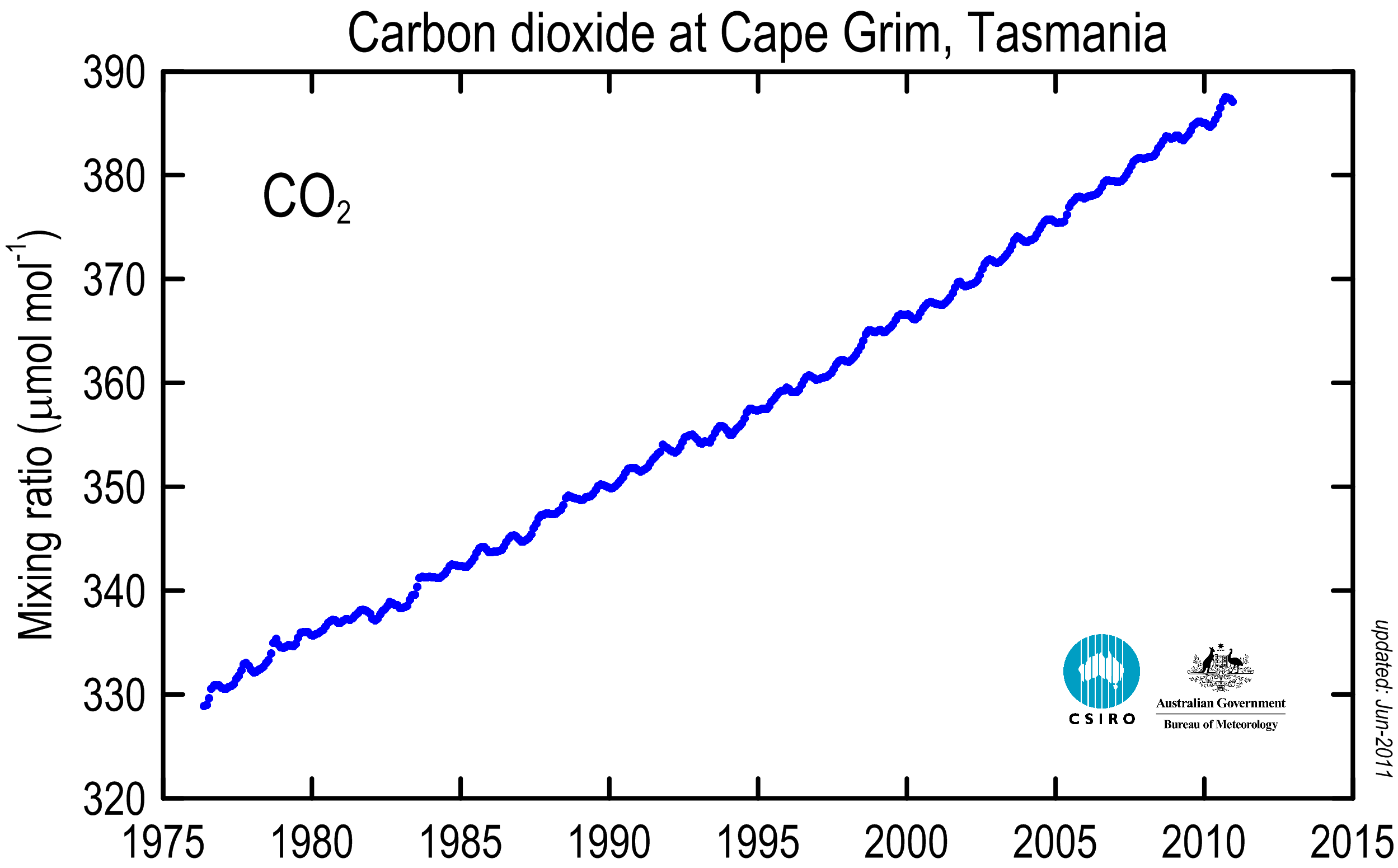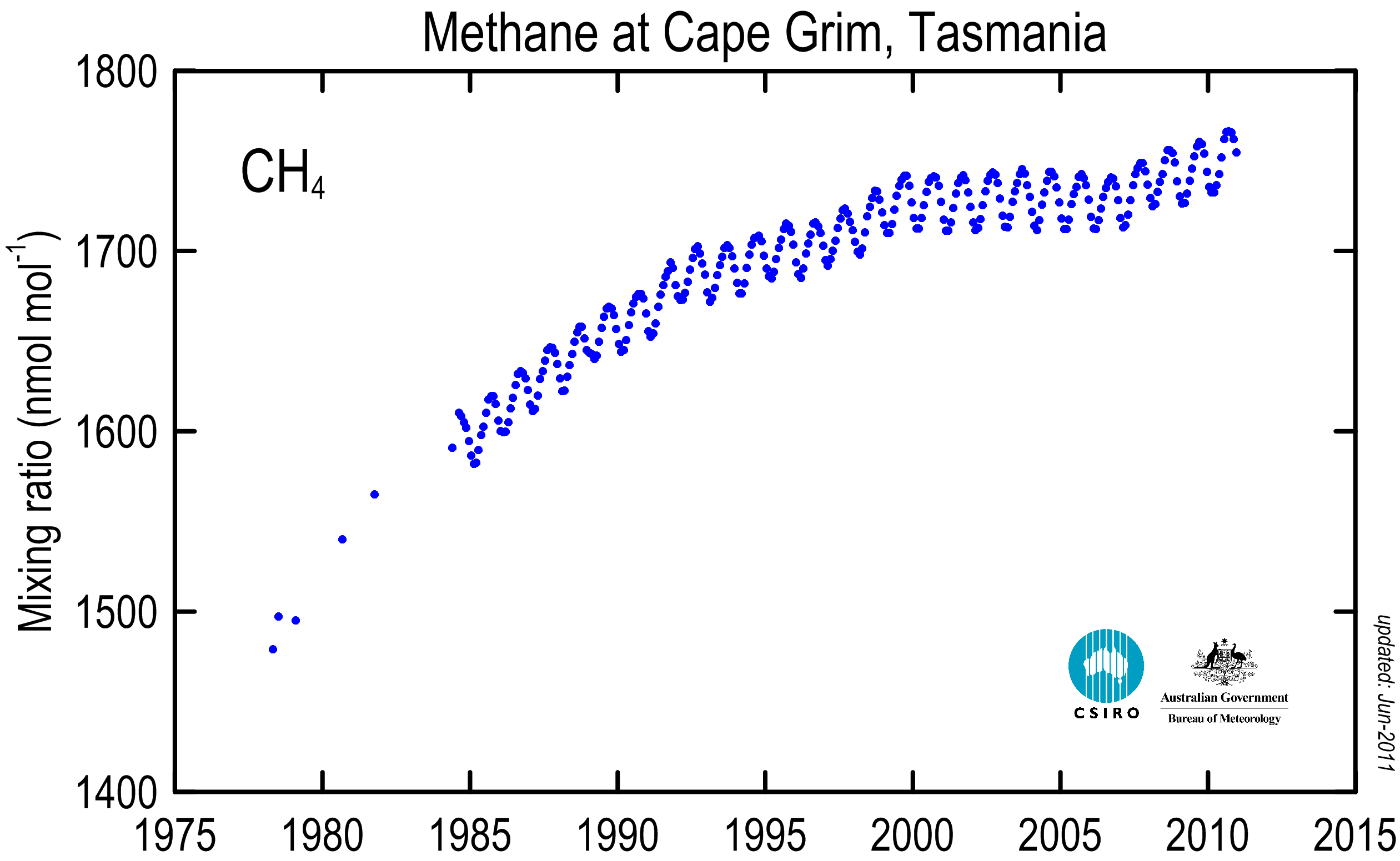
The greenhouse effect occurs because greenhouse gases let sunlight (shortwave radiation) pass through the atmosphere. The earth absorbs sunlight, warms then reradiates heat (infrared or long wave radiation). The outgoing long wave radiation is absorbed by greenhouse gases in the atmosphere. This heats the atmosphere which in turn re-radiates long wave radiation in all directions. Some of it makes its way back to the surface of the earth. So with more carbon dioxide in the atmosphere, we expect to see less long wave radiation escaping to space at the wavelengths that carbon dioxide absorb. We also expect to see more infrared radiation returning back to Earth.
Greenhouse gases include:
1. Carbon dioxide.
The biggest contributor to global warming by volume produced and net effect. CO2 is produced by the combustion of fossil fuel in a combustion reaction, which should be familiar to you from junior classes. It is also caused by the breakdown of carbon in soils as a result of deforestation.
2. Methane.
This is significant because 1 part of methane is up to 20 times better at reflecting infrared radiation compared to CO2. It is produced by ruminant animals (burping, not farting), rice paddies and landfills.
3. Nitrogen dioxide
This gas is becoming more problematic due to its increasing levels. This gas is produced by the by combination of nitrogen and oxygen in car engines. Because air is a mixture of these 2 gases, when it is drawn into the cylinder, some of the energy produced by the burning of the fuel combines to form nitrogen dioxide
Graphs showing the levels of these gases follow below



I should point out that this temp data does require some processing, but the link between historical temps and CO2 levels is striking. Of concern is the spike in the blue line at the end, that is a result of our activity. This is unprecedented in the 450,000 year history of the atmosphere preserved in ice cores.
There is now pretty much consensus that global warming is happening now and that it will get worse in the next 100 years. For example the average global temps for 11 of the last 12 years have been the warmest recorded. There is no evidence to suggest a change in solar activity or other geological phenomenon. Only a small group of people feel that there is no such thing as climate change. The part up for debate now is the extent that global warming will happen.

No comments:
Post a Comment